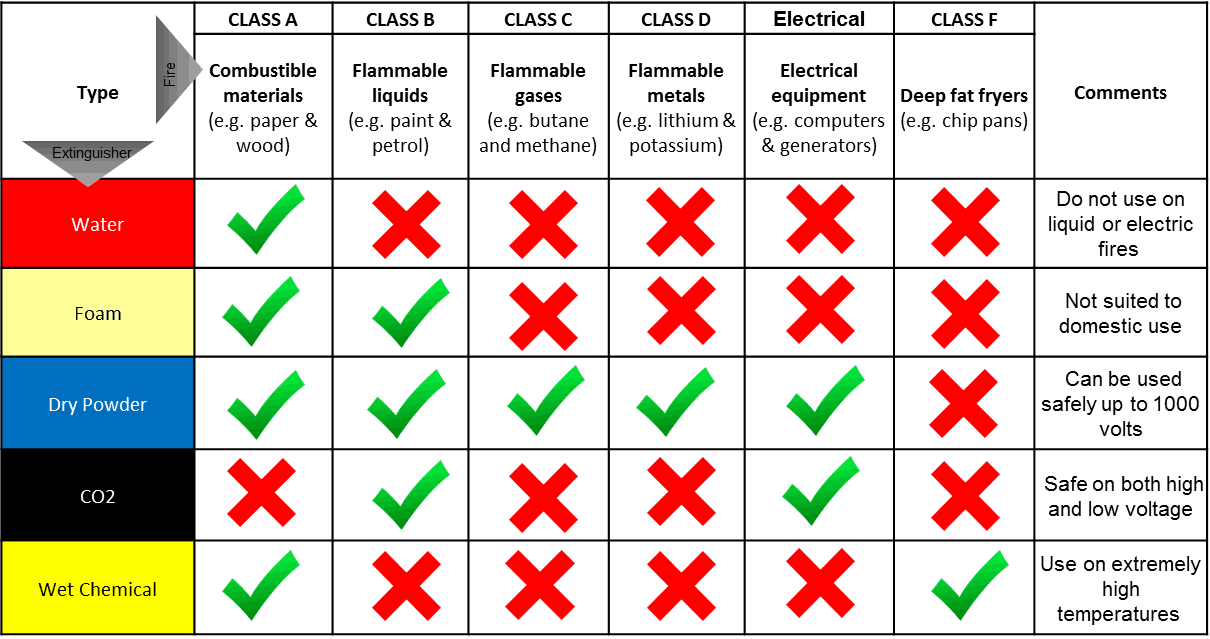|
|
Post by cajunlady87 on May 20, 2019 13:30:29 GMT -7
We all know fire extinguishers are invaluable for putting out fires if they haven't totally engulfed an area. Mine is kept in my kitchen and gets traded out regularly for a newer one. Do you also have one in your vehicle? Vehicles more often than not contribute to the onset of forest fires. Just parking off the road on a dry grassy area can start a fire from a very hot exhaust pipe. Having a fire extinguisher in your vehicle may also help save a life if a wrecked vehicle catches fire. Of course it's a tough call as the vehicle has a chance of exploding but when people are trapped in a burning vehicle many don't even think of that, they are trying to save someone. Being prepared means having a fire extinguisher in your vehicle and a crow bar might help too.  Food for thought! |
|
|
|
Post by Cwi555 on May 20, 2019 23:08:43 GMT -7
Be sure to pick the right one. Dry chemical is the best choice. In the US, it's color coded red.  Since we occasionally get visits from over the pond, those folks need to go by this chart for color coding.  |
|
|
|
Post by ColcordMama on May 20, 2019 23:13:51 GMT -7
I wonder what danger there would be in having a fire extinguisher inside my car, which I park out in the sun, on a day when the high is over 110 degrees and who knows HOW hot inside that car? I can make jerky - and have many times - in my minivan during the summer. I'd guess it can get over 130 at least in the car. What about that summer when the high in our town one day was 120 degrees?
|
|
|
|
Post by Cwi555 on May 20, 2019 23:33:44 GMT -7
I wonder what danger there would be in having a fire extinguisher inside my car, which I park out in the sun, on a day when the high is over 110 degrees and who knows HOW hot inside that car? I can make jerky - and have many times - in my minivan during the summer. I'd guess it can get over 130 at least in the car. What about that summer when the high in our town one day was 120 degrees? UL requires a fire extinguisher to withstand storage temperatures of up to 170° F. The downside is the elastomeric seals will degrade faster in high temps which reduces the service life of it. Whenever I worked desert environments, I kept a go bag with me at all times that contained emergency food, water, medical, and a small extinguisher. It went with me everywhere in the refinery/petrochemical world for desert/arid regions. Total weight was eight pounds, but it saved my arse twice over my career. They will last a lot longer stored in the shade or inside a building. Just have to remember it when you get out and about. |
|
|
|
Post by ColcordMama on May 20, 2019 23:58:22 GMT -7
With my luck I'd get an extinguisher that will explode when the temperature reaches 110 degrees, and it will be while I'm driving somewhere and I'll end up like that poor woman whose tube of refrigerated biscuit dough exploded in the back seat of her car and soft wet dough landed on the back of her head. When she reached back to feel her head to try to figure out what had happened, she felt the clumps of dough and thought it was her brains. She sat there crying in the grocery store parking lot until someone noticed and came to her aid. That would be me. Except fire extinguishers are in metal containers and if one exploded it would throw shrapnel and hit me in the back of my head and it really would be brains.
I really enjoyed writing that, and giggling while I did so. I needed that.
|
|
|
|
Post by cajunlady87 on May 21, 2019 2:53:59 GMT -7
Thanks for the extra info CWI. I brought mine to the fire station and got their seal of approval. It's made specifically for marine and auto use to put out fires.
|
|
|
|
Post by Cwi555 on May 21, 2019 12:09:36 GMT -7
Thanks for the extra info CWI. I brought mine to the fire station and got their seal of approval. It's made specifically for marine and auto use to put out fires. That is a good way to assure you have the right one. You might also ask them for pointers as to the correct usage. They are normally agreeable (fire personnel) to that. |
|
|
|
Post by olebama on May 21, 2019 18:48:21 GMT -7
Remember PASS
P--pull the pin
A--aim at the base of the fire
S--squeeze the trigger
S--sweep from side to side
Pin is held in place by a plastic seal. Break that off first. Remember to NOT squeeze down on the trigger when pulling the pin. If you squeeze down on the trigger, you are basically putting the pin into a vise. The guy that serviced our fire extinguishers told me of going to places and the extinguisher had bent triggers where people couldn't remove the pin. If they had just released the pressure, the pin comes right out.
|
|